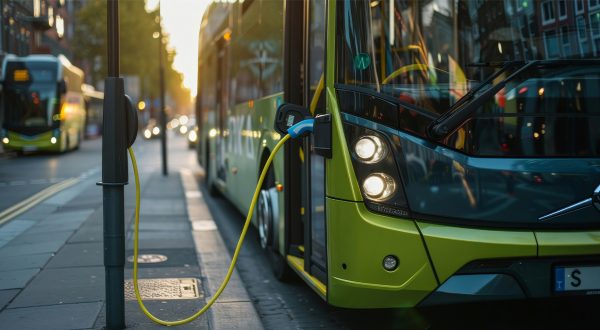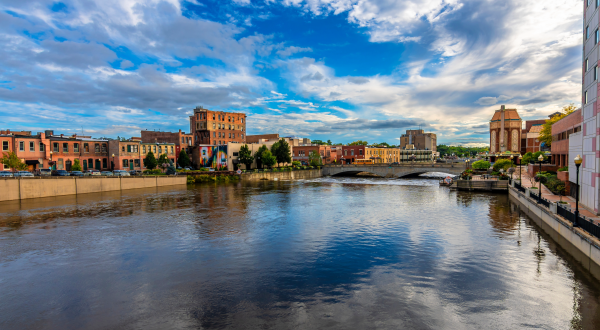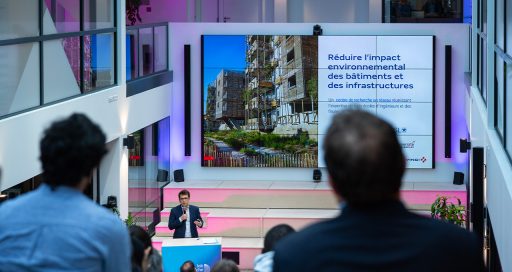Intelligent lighting solution drives smart city development in Germany
Reading time: 4 min
Tested in Lemgo, the We-Light Open smart lighting solution developed by Omexom provides a permanent power supply for street lighting systems combined with a fine-grained control of city lighting. It also fits into the broader framework of smart city applications.
![]()
When it comes to upgrading a city’s lighting system, installing LED lamps often tends to be the go-to option. But for savvier local authorities that are keen to leverage digital technology, the benefits of the dense network of lighting columns far outweigh those of LED street lights, even if they are “smart” and cost-effective.
Indeed, columns are ideal for mounting sensors that capture a variety of data and for running digital applications useful to both residents and city councils. With this in mind, the town of Lemgo in North Rhine-Westphalia (western Germany) set up a life-size test laboratory with the Fraunhofer IOSB research facility, where businesses can trial digital solutions aimed at making street lighting smarter.
One such business is Omexom (VINCI Energies), which used this town of 40,000 people to test its We-Light Open solution, a platform for building a smart city based on lighting systems.
With the assistance of Lemgo’s technical departments, Omexom integrated into the street lamps not just sensors to manage parking but also gateways to other applications.
“No two towns have the same expectations when it comes to smart city features. The value of the We-Light Open solution is that it can be tailored to individual requirements.”
According to Tobias Hugo, project manager at Omexom and smart city solution specialist, successfully retrofitting existing lighting columns to make them smart by means of the We-Light Open technology, “has laid the foundations for a permanent power supply for smart city components using a street lamp.”
Smart City applications supported by existing street lighting system
Omexom’s solution powers other smart city components. Once it has been installed, street lighting is managed in the same way as before or adapted to innovative methods. One of the characteristics of We-Light Open is that the solution can be deployed independently in each sub-network of the existing street lighting system. This means that an upgrade can be carried out in stages and that the operator can choose which areas to equip first. Installation is very simple and the system is run in the same way, with no need to configure an additional parallel network to control lighting. Furthermore, it allows for different types of lighting to be installed across the existing network, says Hugo, for example: “LED lamps or capacitive and inductive luminaire heads.”
Interest from several German towns
The solution developed by Omexom is of particular interest to cities and medium-sized towns which have to finance projects while also taking into account existing lighting networks. In Germany, a number of towns have already expressed interest, points out the Omexom project manager, including Duisburg, Essen and Mönchengladbach in the state of North Rhine-Westphalia, and Ingolstadt in Bavaria.
“No two towns have the same expectations when it comes to smart city features,” says Hugo. “The value of the We-Light Open solution is that it can be tailored to individual requirements.” Omexom’s approach is progressive, recognising a local authority’s need to be able to integrate various types of sensors, in several stages and on a street-by-street basis.
Omexom starts by installing the equipment and components needed to provide the lighting columns with DC voltage. It then carries out the connection, control and management: networking the columns, controlling the lighting, remote monitoring via a dashboard with open interfaces, preparing the sensors and setting up the Wi-Fi connection.
And finally, once the scalable smart city project has been defined with local authority managers, Omexom installs the sensors and applications for the various features, for example parking, traffic, weather conditions, advertising and mobile phones, Wi-Fi, charging points for electric bikes, etc. “Thanks to its pragmatic approach and staged construction method, We-Light Open is driving smart city development,” says Hugo.
12/03/2020
Learn more:
https://www.iosb.fraunhofer.de





